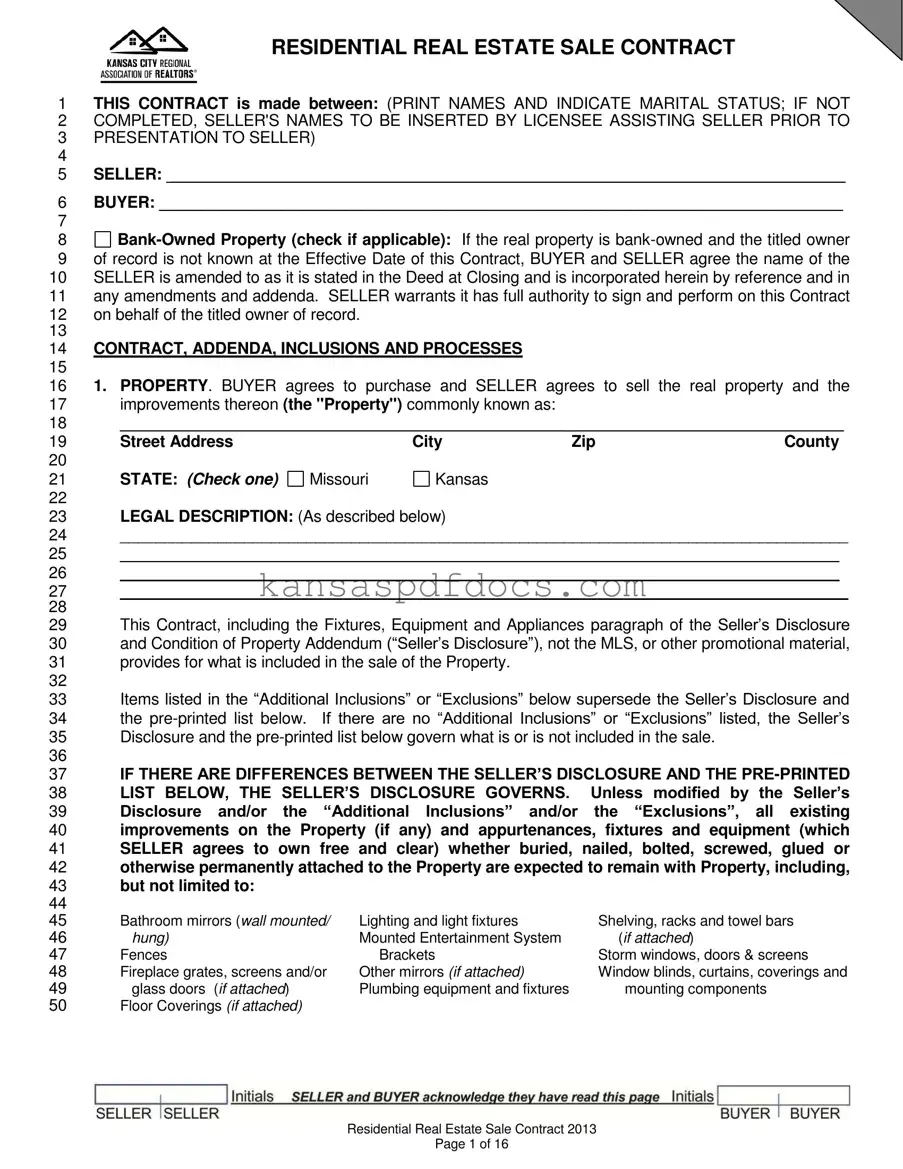The Kansas Estate Contract form is a vital document for anyone looking to buy or sell residential real estate in Kansas. This form outlines the essential terms and conditions of the sale, ensuring that both buyers and sellers are on the same page. At its core, the contract identifies the parties involved, including the seller and buyer, and specifies the property being sold, complete with its legal description and address. It also addresses important aspects such as the purchase price, earnest money deposits, and any additional terms or contingencies that may apply. For instance, if the property is bank-owned, the contract includes provisions to amend the seller's name to match the deed at closing. Furthermore, the form highlights what is included in the sale, such as fixtures and appliances, and allows for the specification of any exclusions or additional inclusions. The contract also covers the possibility of a home warranty and outlines the responsibilities of the parties regarding disclosures and modifications. By clearly defining these elements, the Kansas Estate Contract helps protect the interests of both parties while facilitating a smooth transaction process.
